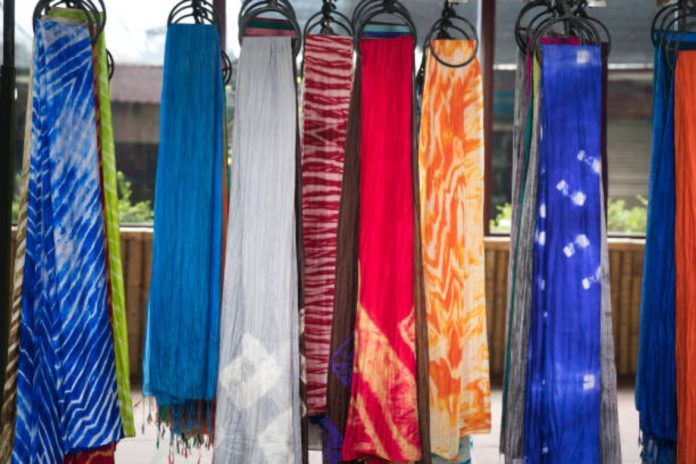Sarees have been an integral part of Indian culture for centuries, symbolizing grace, tradition, and femininity. In recent years, the craze for sarees has reached new heights, with women from all walks of life embracing this iconic garment not only for traditional events but also as a fashion statement. From young fashionistas to brides and working professionals, the saree has become a wardrobe essential that effortlessly blends tradition with modern style.
So, what’s behind this growing craze for sarees? Let’s explore some key reasons that make this garment more popular than ever.
1. A Symbol of Timeless Elegance
One of the primary reasons for the saree’s enduring popularity is its timeless elegance. A saree, when draped properly, instantly transforms the wearer, adding an air of sophistication and grace. Whether it’s a rich Kanjeevaram saree for a wedding or a simple cotton saree for everyday wear, the saree has a magical quality that enhances a woman’s poise and charm.
Its versatility allows it to adapt to both traditional and contemporary looks. Celebrities, influencers, and designers have played a significant role in reintroducing the saree as a chic, fashionable attire suitable for both formal and casual settings.
2. Diverse Variety to Suit Every Style
The wide range of sarees available is another reason for the growing craze. With more than 100 different types of sarees, each representing a specific region or style, there is something for every occasion and personal preference. Whether it’s the luxurious Banarasi silk, the lightweight chiffon, the handwoven beauty of a Bengal cotton, or the vibrant patterns of a Bandhani saree, there’s a saree for every mood and event.
This diversity allows women to experiment with various fabrics, designs, and draping styles. Fashion-conscious women love the idea of curating their own collection of sarees to reflect their personal taste and cultural heritage.
3. A Blend of Tradition and Modernity
Sarees offer a unique blend of tradition and modernity, making them appealing to women of all generations. While it is deeply rooted in Indian heritage, modern designers have reimagined the saree with contemporary twists. You now see sarees paired with stylish blouses, belts, jackets, or worn in innovative drapes, making them more appealing to the younger generation.
The ability to seamlessly fuse traditional designs with modern trends has played a major role in the saree’s comeback. It’s no longer seen as an “old-fashioned” garment but rather a stylish and trendy outfit that fits into modern wardrobes.
4. Sustainability and Handloom Revival
In an era where consumers are becoming more mindful of sustainability, sarees crafted from natural fabrics like cotton, silk, and linen have gained popularity. Many fashion-conscious individuals are now turning to eco-friendly, handloom sarees as a way of supporting local artisans and embracing slow fashion. The revival of handwoven and handcrafted sarees like Khadi, Ikat, and Tussar silk is a reflection of the growing movement toward sustainability in fashion.
The saree is seen as a symbol of conscious consumption, helping to preserve traditional craftsmanship while also promoting sustainable fashion practices.
5. Empowerment Through Cultural Identity
For many women, wearing a saree is about more than just fashion; it is a way to express cultural pride and identity. The saree represents a deep connection to Indian heritage, with each type of saree carrying its own story of origin, craftsmanship, and cultural significance. By wearing a saree, women are embracing their roots and celebrating the rich history and artistry behind this garment.
Whether it’s on global fashion platforms or social media, the saree has become a powerful symbol of cultural empowerment, worn with pride by women all over the world.
6. Versatile and Flattering for All Body Types
One of the most unique aspects of the saree is its ability to flatter all body types. The drape can be adjusted to suit any figure, accentuating curves while providing a graceful silhouette. Whether tall, short, curvy, or slender, the saree’s adaptability makes it a universal garment that celebrates body positivity.
This inclusivity has played a significant role in the growing saree craze. Women feel confident and beautiful in sarees, knowing that the garment complements their unique body shape.
There are different types of sarees for different occasion too. For party there is a designer saree, for wedding there is a silk saree, for daily use there is a cotton saree and many Sarees are available under 1000 rupees.
7. Global Popularity and Celebrity Influence
The saree has gone global in recent years, thanks to Indian designers showcasing it on international runways and Bollywood stars, as well as global celebrities, wearing sarees at major events. The world is witnessing the saree as a fashion-forward piece, with influencers across the globe embracing it for its versatility and beauty.
Prominent figures like Priyanka Chopra, Deepika Padukone, and even international celebrities like Naomi Campbell and Gigi Hadid have been spotted wearing sarees, giving the garment international appeal and further fueling its popularity.Conclusion
The growing craze for sarees is a testament to the garment’s timeless appeal and its ability to evolve with changing fashion trends. Whether worn for a wedding, a festive celebration, or a casual outing, the saree continues to captivate women with its grace, versatility, and cultural significance. As more women rediscover the beauty and elegance of this traditional attire, the saree remains not just a garment, but a symbol of identity, heritage, and empowerment.









